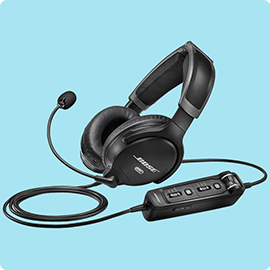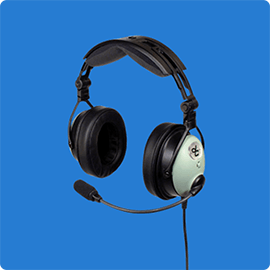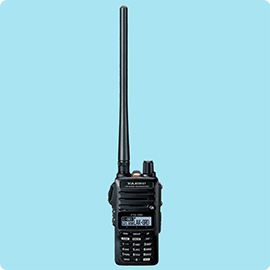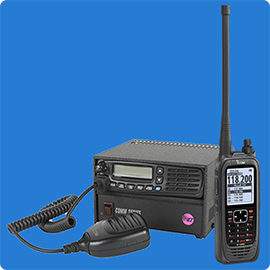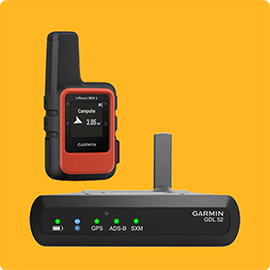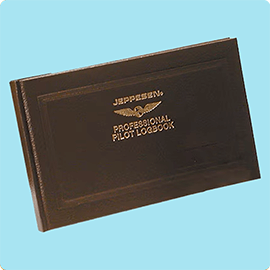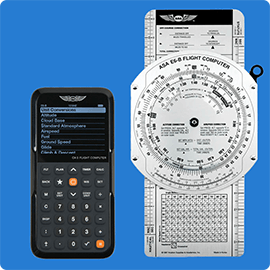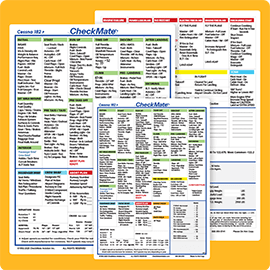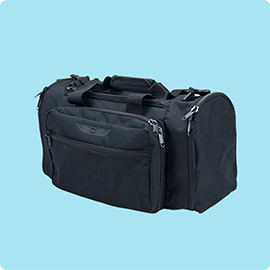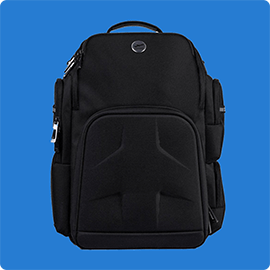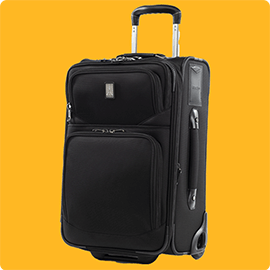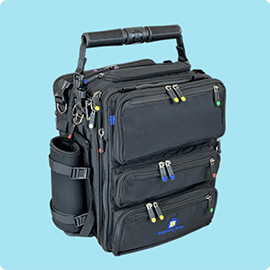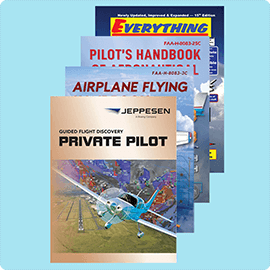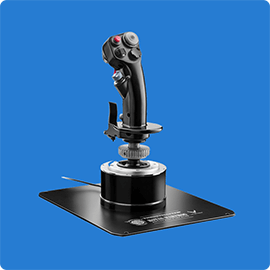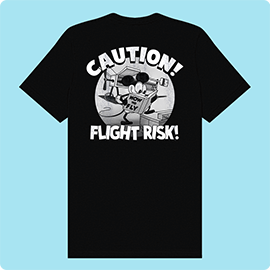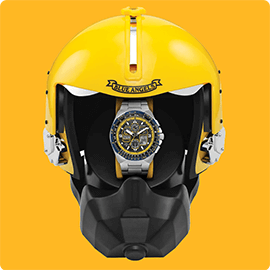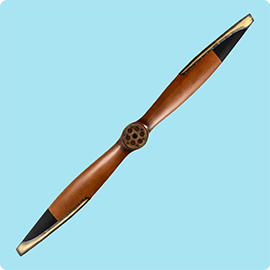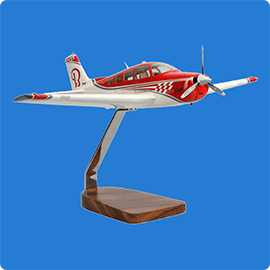Best Portable CO Detectors for Pilots (2025): Tested Picks, Panel Placement & Care
Carbon monoxide is a colorless, odorless, and lethal threat in any piston aircraft cabin. With the NTSB urging pilots to adopt active alerting detectors, choosing the right device is a critical safety decision. To help you make the right choice, our team of experienced pilots put the top portable CO detectors to the test in real-world cockpit conditions. This guide provides our unbiased 2025 picks, shows you the FAA-researched best location for mounting, and covers the essential maintenance to keep you safe on every flight.
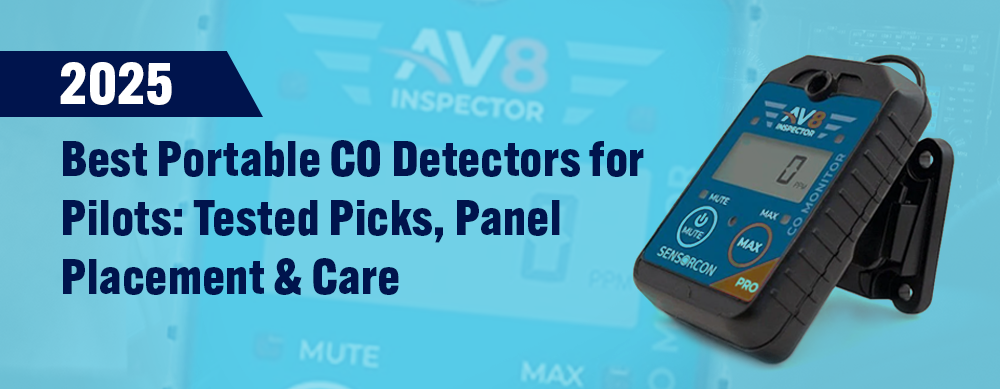
Featured Pilot Gear
Browse our selection of high-quality pilot supplies! Your purchase directly supports our small business and helps us continue sharing valuable aviation content.
Carbon monoxide (CO) is a silent killer in general aviation. This colorless, odorless gas can quickly incapacitate a pilot, often from a tiny, undetected exhaust leak. After a series of accidents, the NTSB urged the FAA to require active, alerting CO detectors in GA—because passive “spot” cards are easy to miss under workload.
This guide cuts through the noise. We’ll show you which detectors we trust, exactly where to mount one, and how to maintain it for reliable protection.
Our Top Picks for 2025: Quick Comparison
Note: The 35/200 ppm alarm points align with NIOSH occupational guidance (REL 35 ppm TWA; 200 ppm ceiling). They are not an FAA/NTSB “standard.”
| Model | Best For | Low/High Alarm (ppm) | Vibration | 24‑hr TWA | Calibration | Bracket |
|---|---|---|---|---|---|---|
| Sensorcon AV8 Pro | Overall Performance | 35 / 200 adjustable (adjustable) | Yes | Yes | Every 6 months | Included* |
| Sensorcon AV8 | Best Value | 35 / 200 (preset) | No | No | Every 6 months | Included* |
| ASA Spot Detector | Essential Backup | N/A (color change) | No | No | N/A | Adhesive |
*Bracket included; mounting hardware not included.
Why Active Alerting is a Cockpit Essential
Investigators and safety bodies advocate active aural/visual alerting because it breaks through cockpit workload. That’s why the NTSB pushed for detectors with active alerts in GA, and why the UK’s CAA now requires an active detector in many piston‑engine ops carrying non‑pilot passengers. Use passive cards only as a secondary layer.
Detailed Product Reviews
Sensorcon AV8 Inspector Pro — Best Overall
The Pro is our top choice when you want maximum situational awareness. The vibration alert is invaluable in loud cockpits where a beep can be missed.
- Standout features: Triple alerting (beeper, LEDs, vibration), adjustable low/high alarms, and 24‑hour TWA exposure readout for multi‑leg days. Panel bracket included.
- Care & maintenance: Calibrate every 6 months. An EOL icon appears at ~2 years; each successful calibration extends service by ~180 days while the sensor remains healthy.
- Battery: CR123A (user‑replaceable); typical life up to ~2 years depending on alarms.
Sensorcon AV8 Inspector — Best Value
Same core electrochemical sensor and loud alerts as the Pro, with preset alarms ideal for most pilots.
- Why pilots pick it: Set‑and‑forget factory alarms (35 ppm low / 200 ppm high), MAX‑hold (peak) reading, 2‑year warranty, and a panel bracket in the box.
- What you give up: No vibration alert, no custom alarm set‑points, no TWA display.
ASA Carbon Monoxide Detector (Spot Card) — The Essential Backup
A battery‑free indicator that darkens in the presence of CO. It’s not a primary detector, but it’s a simple, visible backup layer.
- Good to know: Service life 12 months after opening; typical ~3‑year unopened shelf life.
- Placement tip: Avoid harsh direct sunlight (can bleach the spot).
Where to Mount Your Detector in a C172 & PA‑28
Don’t just clip it anywhere. FAA‑sponsored flight tests found the instrument panel had the highest probability of catching elevated CO across the cabin. For better capture of cabin events, set your low alarm ~35 ppm; this improves detection of ≥ 50 ppm anywhere in the cabin.
- Recommended: Mount the electronic detector on the panel with the sensor inlet unobstructed.
- Backup: Place any spot card within your normal instrument scan.
Frequently Asked Questions (FAQ)
What should I do if my CO alarm goes off in flight?
Act immediately: turn OFF cabin heat, open all fresh‑air vents, consider oxygen if available, advise ATC as needed, and land as soon as practical. Don’t fly again until an A&P inspects the exhaust, heat exchanger, firewall and seals.
Can I use a cheap home CO detector in my airplane?
Not recommended. Residential units listed to UL 2034 are intentionally insensitive at low levels (e.g., no alarm at 30 ppm; alarm at 70 ppm can be delayed 60–240 minutes) to reduce nuisance trips in homes. They’re optimized for home environments, not vibrating, sun‑heated cockpits. Choose an aviation/industrial unit with real‑time ppm and active alerts.
How often do I need to calibrate my Sensorcon?
Every 6 months. Expect an EOL indicator at ~2 years; a successful calibration clears EOL for ~180 days at a time while the sensor remains healthy.
Complete Shopping Checklist
- Primary detector: Sensorcon AV8 Pro (or AV8).
- Backup: ASA Spot Card.
- Extras: Spare CR123A battery, alcohol wipes for the sensor inlet, and a small panel‑mount hardware kit (e.g., #6–#8 machine screws, washers, nyloc nuts).
- Browse all: Pilot Mall CO Detectors.


